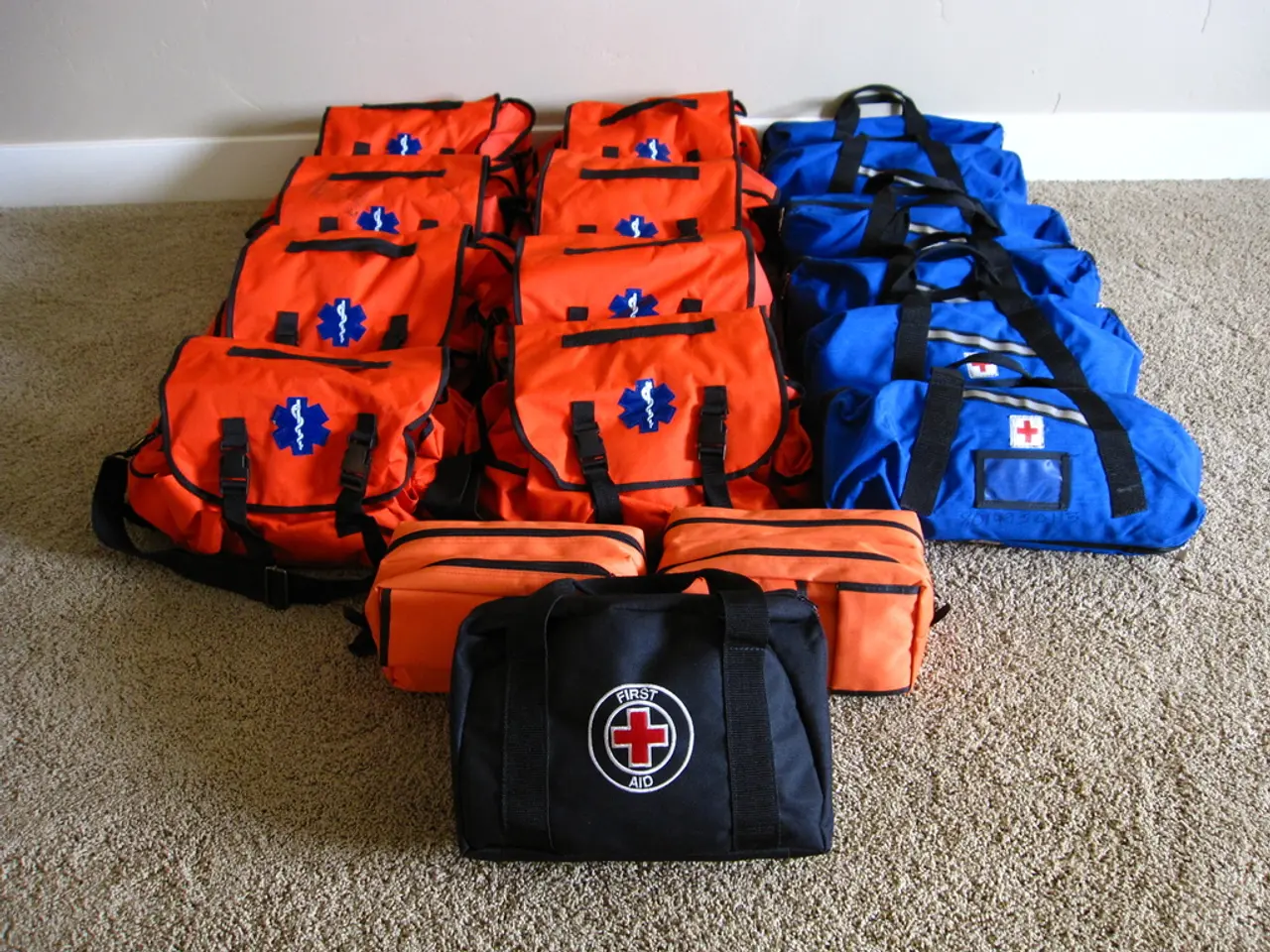Life-Saving Skills Acquisition through First Aid and Cardiopulmonary Resuscitation Training
In today's fast-paced world, knowing First Aid and CPR skills has become an essential skill for every individual. This training equips people with the ability to address a variety of emergency situations, from respiratory emergencies and cardiac arrest to severe bleeding, fractures, and recognising signs of stroke.
For individuals, the benefits are significant. CPR training can double or even triple survival chances in cardiac emergencies, as it equips individuals with the ability to restart a stopped heart or support breathing until professional help arrives. First Aid training teaches immediate care such as controlling bleeding, treating burns, immobilizing fractures, and clearing airways, which can prevent conditions from worsening and promote faster recovery.
Knowing these life-saving skills not only saves lives but also boosts confidence. Being able to respond calmly and effectively in emergencies reduces panic and hesitation, empowering people to act swiftly when seconds count. Certification in First Aid and CPR also offers up-to-date techniques and is often required by employers, especially in workplaces.
For communities, the benefits are even more profound. Having trained individuals promotes a culture of safety, encouraging adherence to safety protocols and readiness to respond to accidents and health crises. Immediate first aid can decrease injury complications, reduce recovery times, and improve outcomes for many common emergencies.
Certified first aiders help organizations meet legal safety requirements and foster a sense of security, improving morale and trust among employees and community members. First aid and CPR training empower citizens to act in various scenarios, from school or yoga class emergencies to public and workplace incidents, reducing fatalities and serious injuries community-wide.
In summary, First Aid and CPR training save lives, promote faster recovery, and build confident, prepared individuals who contribute to safer neighborhoods and workplaces. This makes such training a critical public health asset and a vital skill for everyone.
Participating in community workshops focused on First Aid and CPR training can contribute to public health initiatives and promote safer environments. These workshops provide interactive training, making them accessible to a broad audience. The primary goal of First Aid is to preserve life, prevent deterioration, and promote recovery until professional medical help arrives.
A first aid kit, an organized collection of supplies and equipment designed to administer immediate care in emergency situations, is an essential part of First Aid. Essential contents of a first aid kit typically include adhesive bandages, sterile gauze pads, antiseptic wipes, medical tape, scissors, tweezers, disposable gloves, and medications such as antihistamines and aspirin.
In-person classes for First Aid and CPR training offer hands-on practice and simulations of emergency scenarios, helping attendees to develop appropriate responses under pressure. The ability to assess a person's responsiveness is critical in emergencies, including checking for breathing and consciousness.
Effective communication skills are essential in First Aid to relay information to emergency responders clearly and accurately. Regularly checking and replenishing supplies ensures the first aid kit is always ready for use. Essential techniques in First Aid include controlling bleeding, managing shock, and treating minor injuries.
In-person classes for First Aid and CPR training offer a hands-on approach to learning essential life-saving techniques. Certification in First Aid and CPR Training validates an individual's knowledge and skills in providing emergency care. Maintaining certification in First Aid and CPR is vital to keep up-to-date with the latest techniques and instill confidence in one's ability to administer First Aid and CPR when necessary.
Expanding one's knowledge in First Aid and CPR Training involves assessing current skill level, enrolling in additional courses, participating in drills or simulation exercises, joining local organizations dedicated to emergency response, and sharing knowledge with friends and family. Training in first aid and CPR significantly impacts mortality rates in emergency situations, with immediate intervention increasing survival rates by up to 30% for cardiac arrest victims.
CPR specifically targets individuals facing cardiac emergencies, where timely intervention can dramatically increase survival chances. Participants in First Aid and CPR training learn the critical steps involved in assessing victims, performing chest compressions, and providing rescue breaths. Understanding First Aid and CPR can empower communities to act swiftly during crises.
- Engaging in education-and-self-development opportunities such as First Aid and CPR training can contribute significantly to one's personal-growth, equipping individuals with the skills needed to administer immediate care in emergency situations.
- Beyond saving lives, First Aid training offers mental-health benefits, providing participants with increased confidence and empowerment, enabling them to act calmly and effectively in crisis situations.
- The e-learning platforms for First Aid and CPR training offer flexible learning hours, making it possible for busy individuals to expand their knowledge in health-and-wellness and support their professional development without compromising their schedules.
- Seeking continuous learning opportunities in education-and-self-development areas like First Aid and CPR Training is essential for maintaining up-to-date techniques and ensuring one's ability to provide effective, life-saving care in various scenarios involving science, such as medical emergencies.








